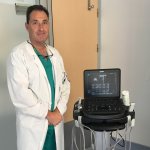
Sponsored • Illumination
Focus on lighting
Yet again the lighting manufacturer ACEM, based in Bologna, Italy, has produced a new and valued medical lighting system – the focusable ACEMSO15F – aimed for use in diagnostics, minor surgery, intensive care and more. Physically, the round, functional, wall, ceiling or trolley mounted ACEMSO15F is easy to grip and move and, for sterilisation, the handle is removable. The optional ABPS…
























